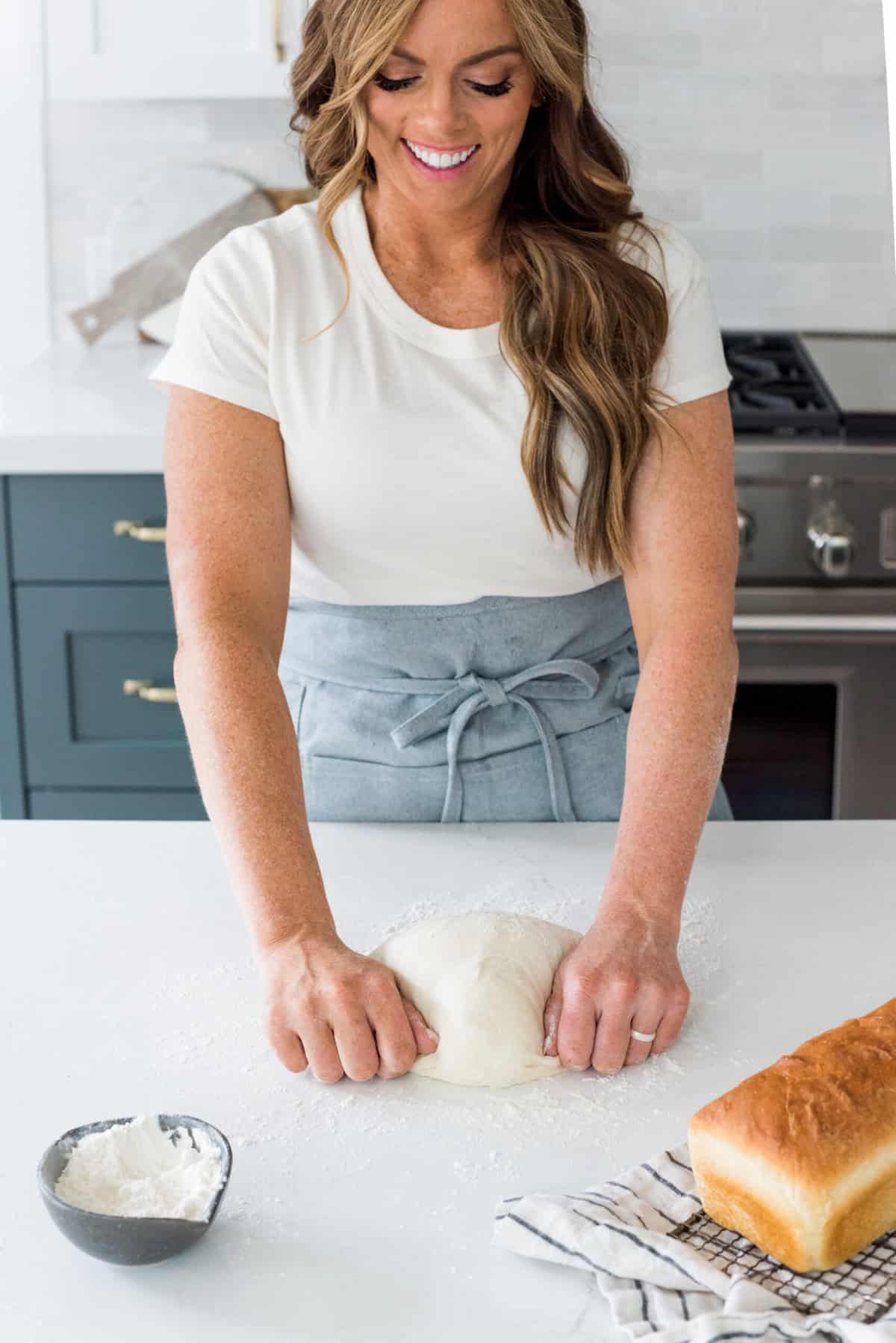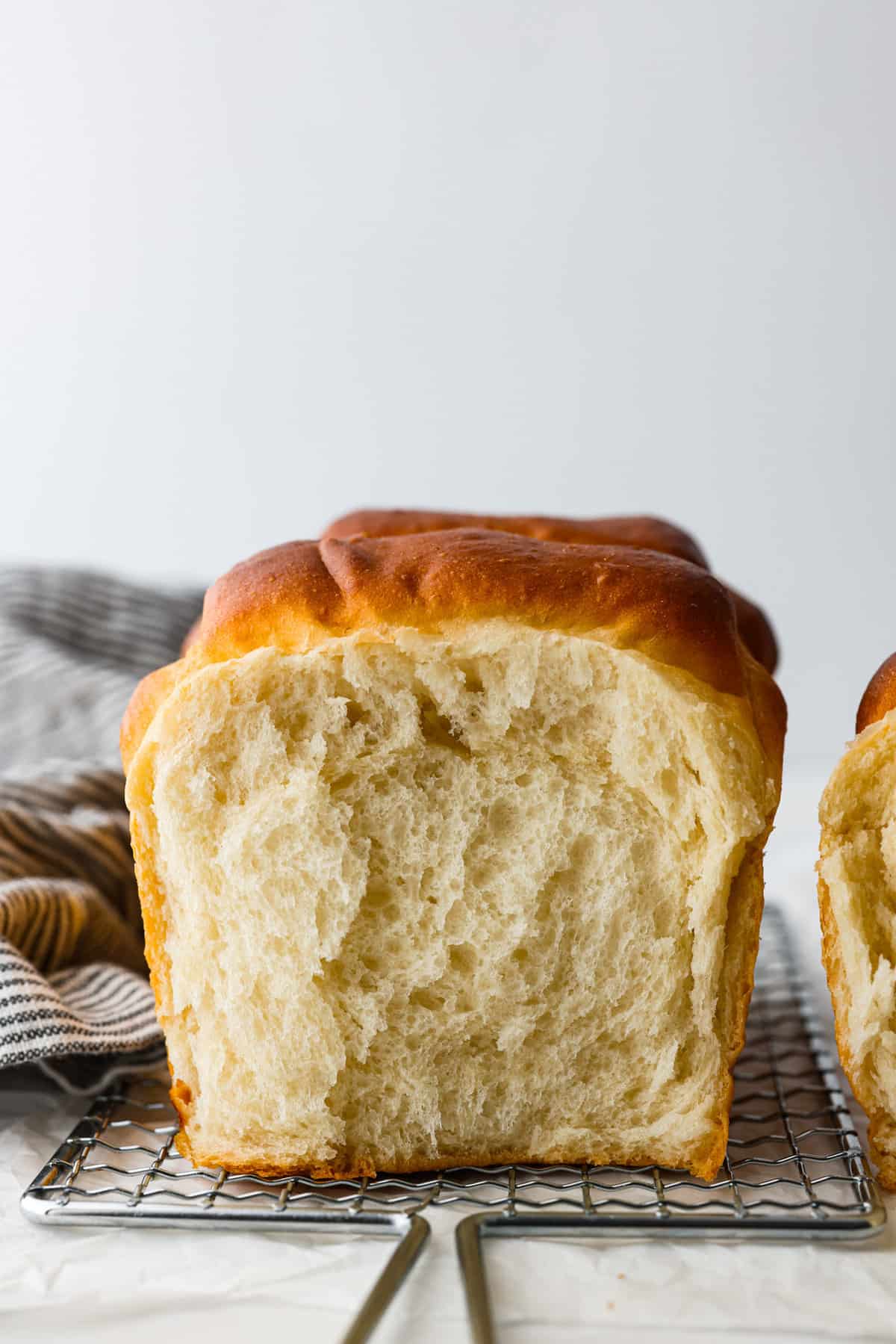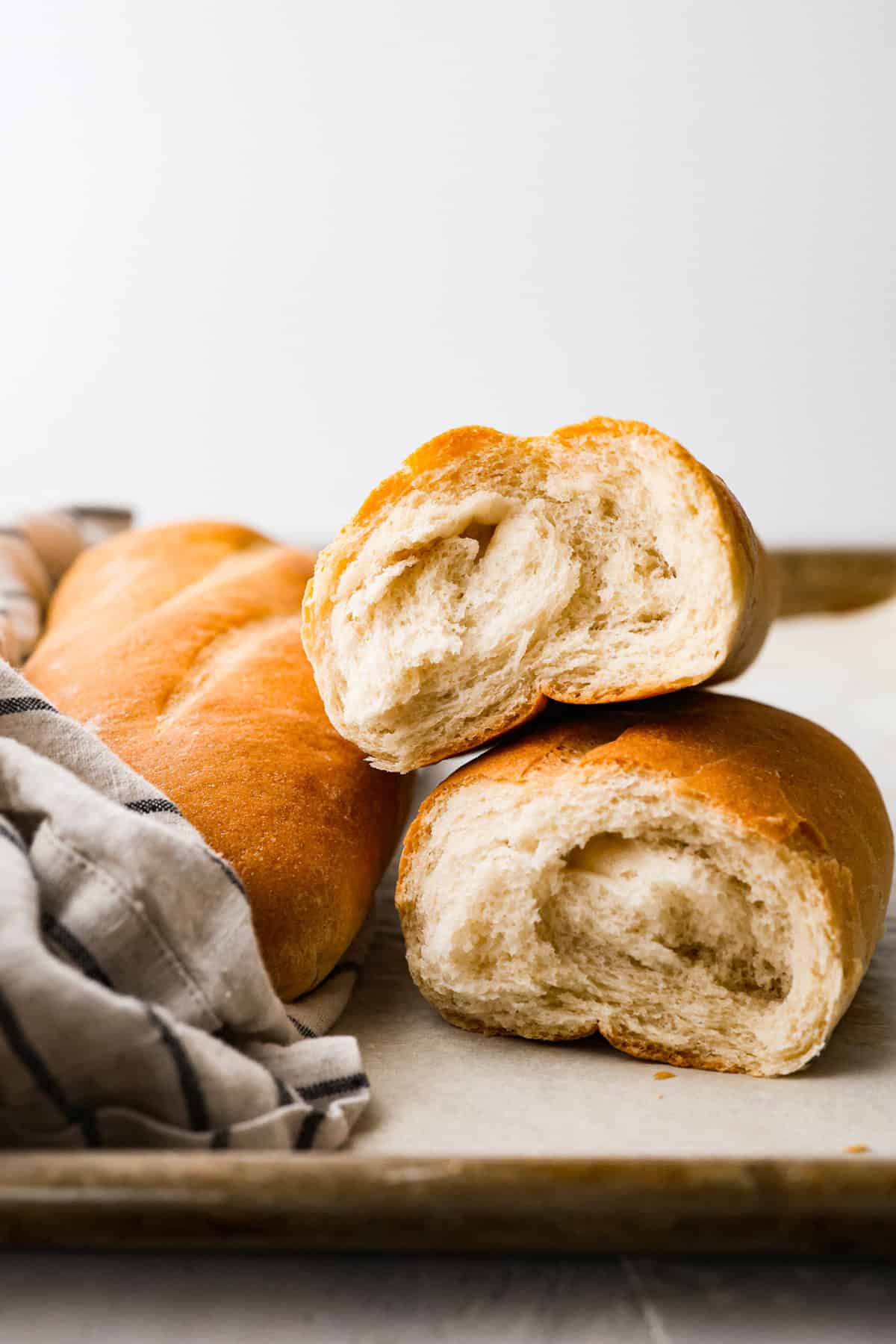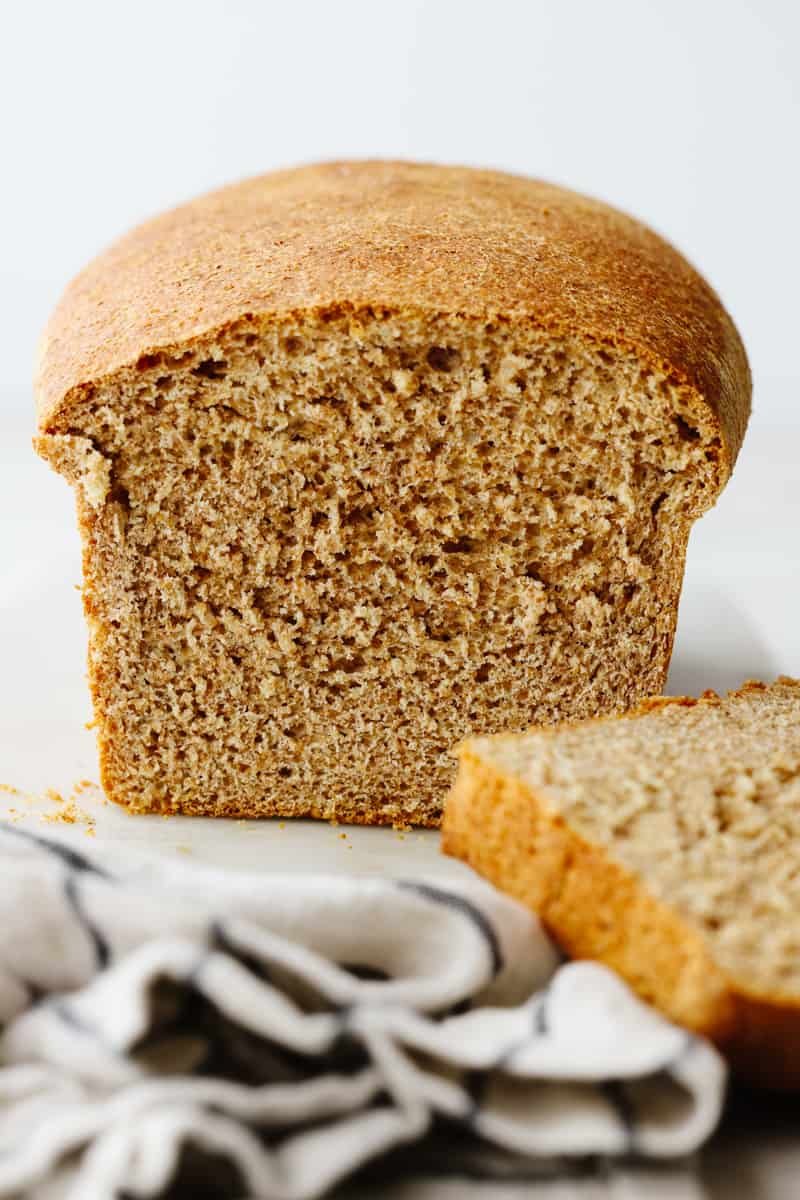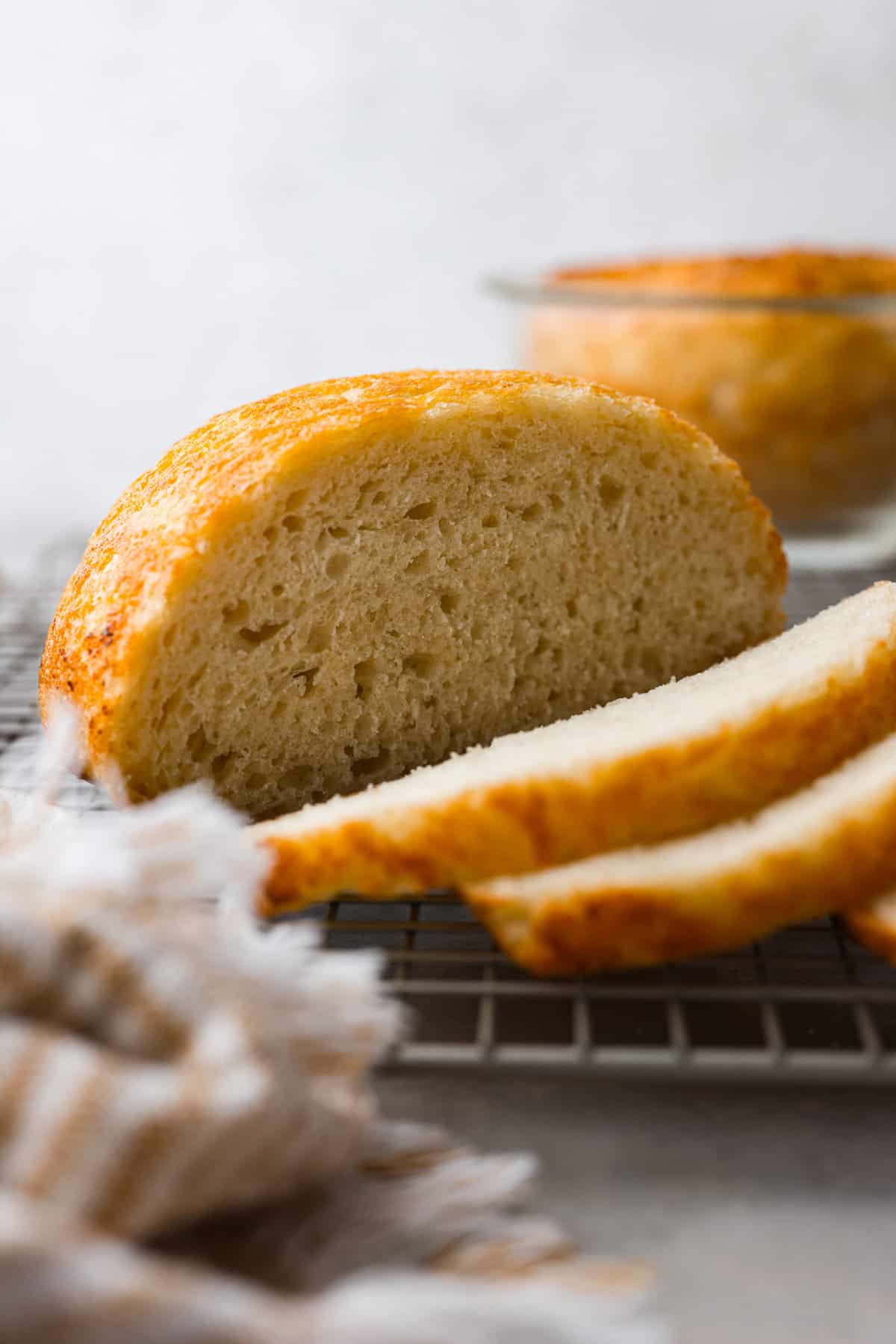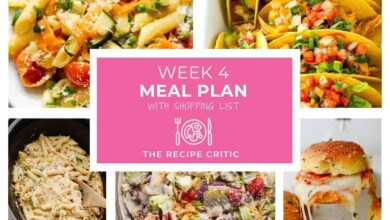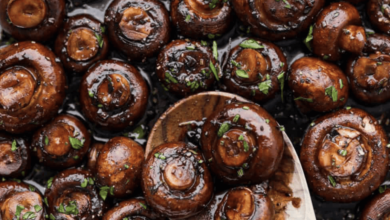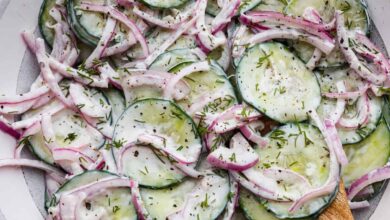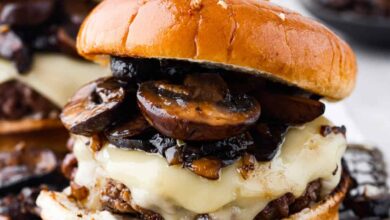Beginner’s Guide to Baking Bread

This website may contain affiliate links and advertising so that we can provide recipes to you. Read my disclosure policy.
You want to make bread, but where do you start? My beginner’s guide to baking bread is here to save the day! Feel confident at bread-making while I hold your hand through the whole process.
Nothing beats a fresh loaf of homemade bread slathered with homemade jam! You can start with this simple no-knead bread, or move all the way into sourdough bread territory. The type of bread you make will determine the ingredients, technique, and time.
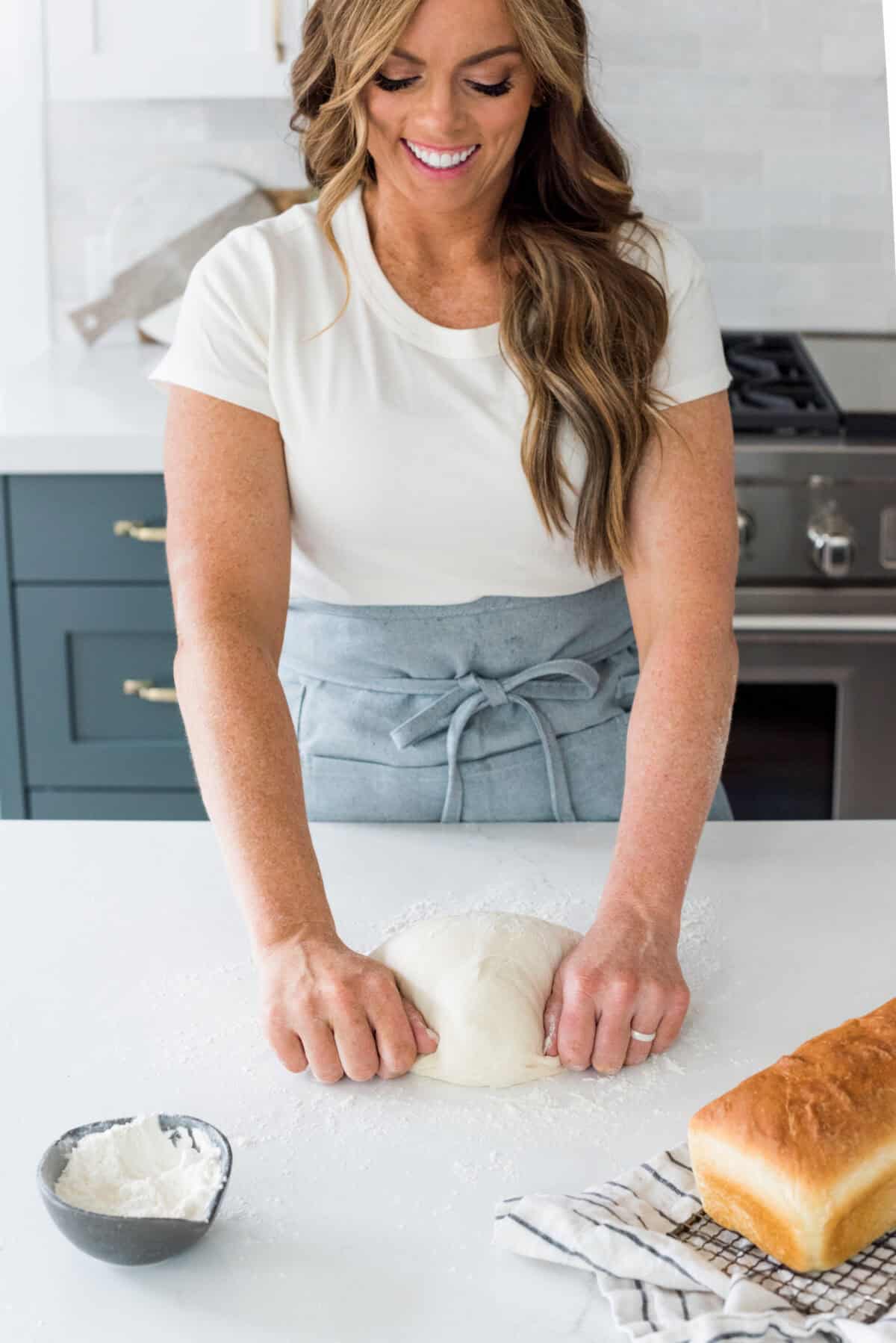
Reasons You’ll Want to Make Bread
- Homemade Bread is the BEST: Warm homemade bread fresh from the oven is everyone’s love language! There’s nothing like it!
- I’ll HELP You: This informative post will help you feel confident in bread-making! I walk you through all the steps and answer all of your questions.
- Homemade VS. Storebought: Homemade bread tastes better than storebought, is cheaper to make, and is made with better ingredients.
Let’s Make Bread!
Baking bread is really all about practice, the more you do it at home and experiment, the more confident you will become. I recommend starting with a simple homestyle loaf like my Grandma’s Perfect Homemade Bread. With a little work and some patience, you will be a bread-baking pro in no time!!
Knowing how to make homemade bread is a very useful skill! Bread is one of those staple grocery items you always need to have on hand. We love to use homemade bread for toast, sandwiches, and French toast! We even love it just warm with my easy honey butter.
Basic Bread Ingredients
At its core, bread consists of 4 simple ingredients; flour, water, salt, and yeast. Working with yeast can be intimidating, but don’t you worry! My How to Bake with Yeast post is extremely helpful if you have any questions!
- Water: The ideal temperature for the water or liquid in your dough is between 90-110 degrees Fahrenheit. If you are unsure, use a thermometer to test the temperature.
- Flour: Use all-purpose flour, whole wheat flour, bread flour, or whole wheat white flour.
- Salt: Adds flavor and also tightens the gluten structure by adding strength to the dough and keeping the yeast from being too active.
- Yeast: For a simple bread recipe, I suggest using a rapid rise or active dry yeast.
Types of Flour For Bread Baking
The type of flour you use will determine how your bread turns out. I explain below how each type of flour affects the texture of your bread.
- Bread Flour: Bread flour is the easiest flour to use and it guarantees a good finished product! It’s specifically formulated to be full of the nutrients the yeast needs to work its magic. Bread flour has more proteins in it that make a big difference when it comes to developing strong gluten, creating a sturdy texture.
- All-Purpose Flour: All-purpose flour is the most common flour to use for basic loaves. It’s easy to find and is a tried and true flour time and time again.
- Whole Wheat Flour: Whole wheat flour has the highest percentage of protein. Since it isn’t ground as finely as other flours, it typically makes a heavier texture, not as airy.
- White Whole Wheat Flour: White whole wheat is made from white spring wheat, it’s lighter in color, and still has a high protein percentage but is ground finer so it yields a lighter loaf than regular whole wheat.
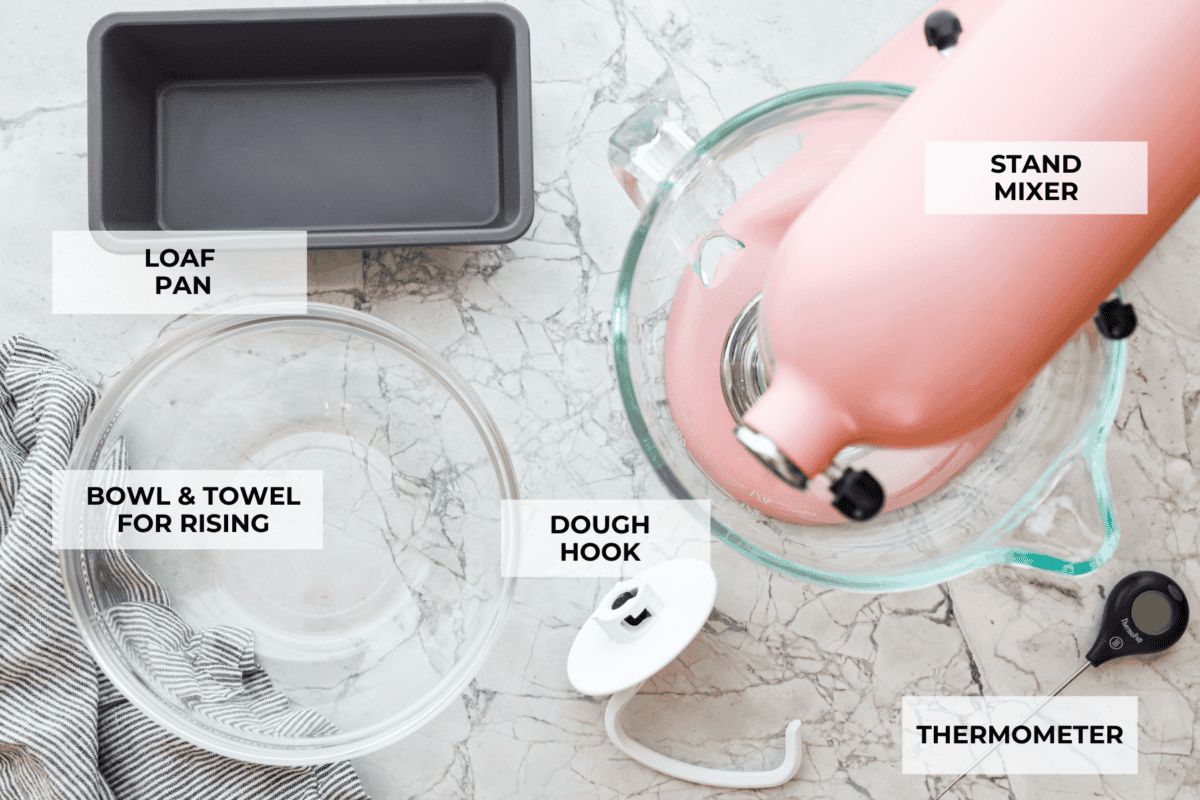
How to Make Bread
There are 8 common steps you need to know when making homemade bread! Some bread recipes can vary, but a typical bread recipe will have the following steps. I walk you through every step with this beginner’s guide to baking bread.
- Prepare the Yeast: Activate the dry yeast by mixing it in a bowl of warm water (90-110 degrees Fahrenheit) and sugar.
- Mix the Dough: Let’s mix the dough! I prefer to incorporate all my ingredients using a kitchen aid. Once the ingredients come together it’s time to knead the dough.
- Knead the Dough: You can use your stand mixer and the dough hook to knead the dough. Slightly increase the speed of the mixer and let it mix for a few minutes. This is my preferred method, but you can also knead the dough by hand. Refer to my kneading instructions in this post to learn how to knead by hand.
- First Rise: Bread dough needs time to rest and proof. Some loaves only require one round of resting and proofing before the final shape, but others will require multiple rounds of folding and resting. Rest the dough anywhere between 30 minutes to an hour until it has risen and doubled its original size.
- Folding Dough: Folding the dough is another way to strengthen and work the gluten in the dough. Fold the dough after the first rise. Dump it out onto a lightly floured surface, stretch it in one direction, then fold it back on itself. Continue around the dough stretching and folding at least 4 times. Place the folded dough back into a bowl. Cover it to continue proofing it if your recipe indicates you do so. If your recipe doesn’t call for folding, the dough is ready to be punched and shaped.
- Punch Down and Shape Into Loaves: Punch the dough to deflate the air pockets. Now it’s time to shape the loaves. If you are using a classic loaf pan, shape your dough into what is called a batard, a small football shape. When shaping your loaf, always ensure the seam is on the bottom and the surface of the loaf is smooth without any tears.
- Final Rise: Once your loaf is shaped, it needs to rest and rise one last time. The dough should double in size before you bake it. This can take anywhere from 45 minutes to an hour.
- Bake: Time and temperature will vary depending on the loaf, but I find it very helpful to always keep a thermometer to test doneness. Almost every loaf should reach an internal temperature of at least 190 degrees Fahrenheit for it to be fully baked.
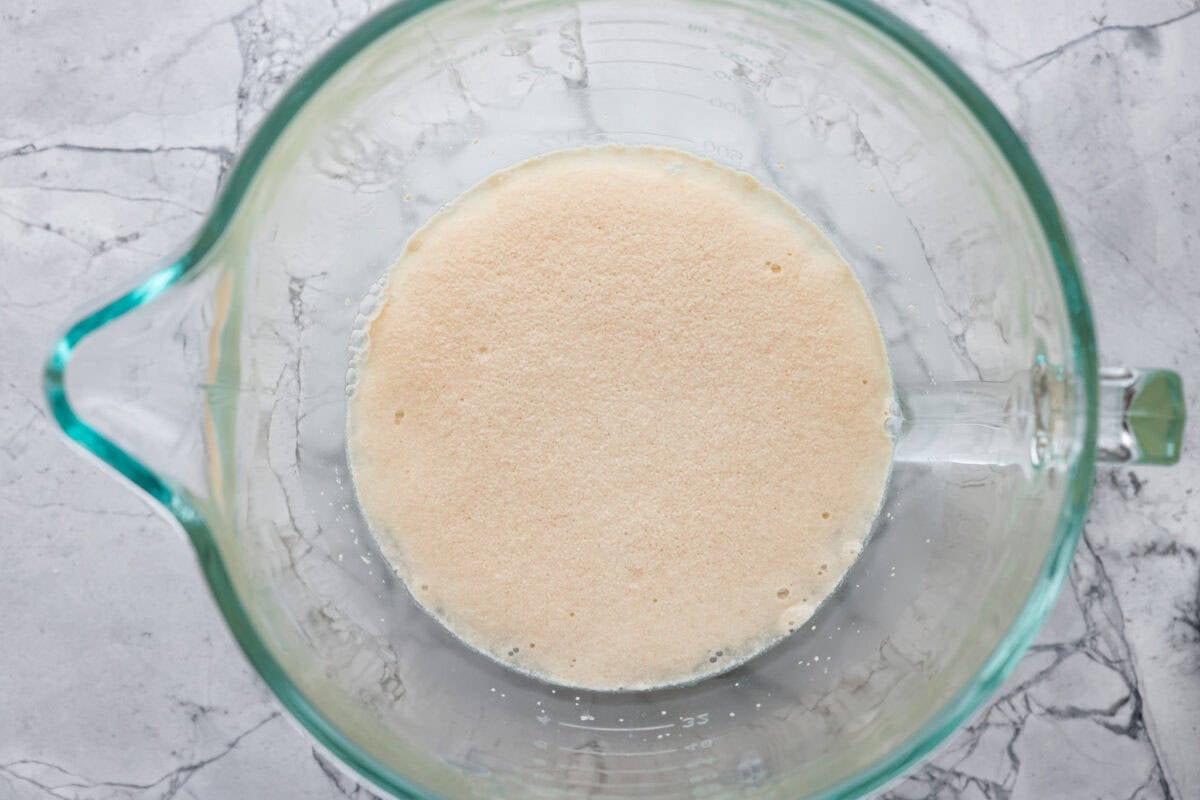
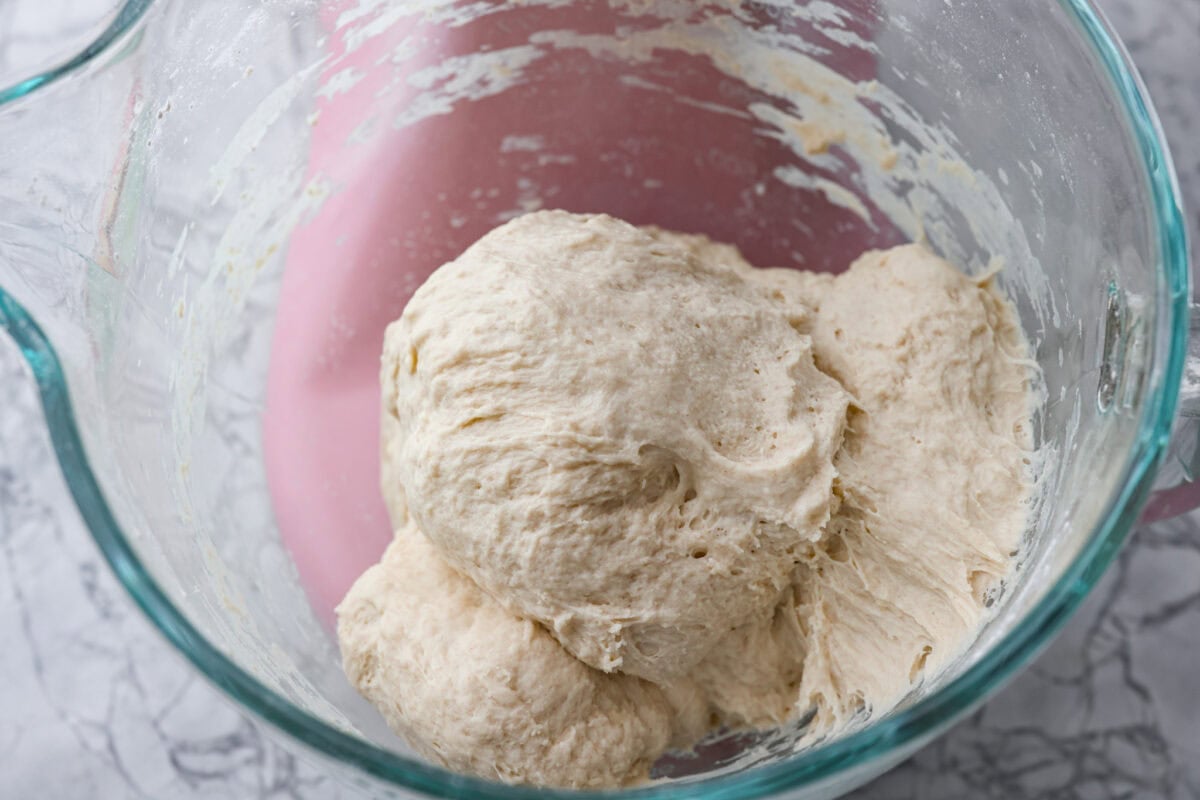
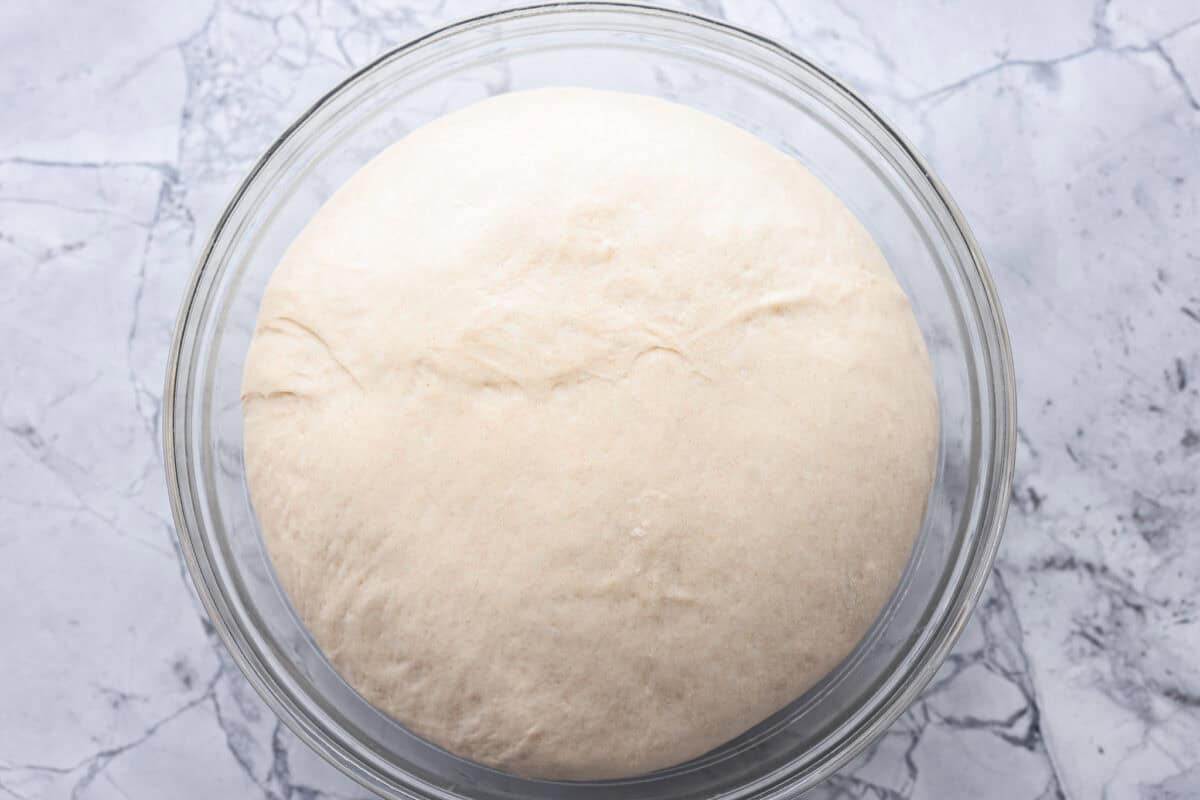
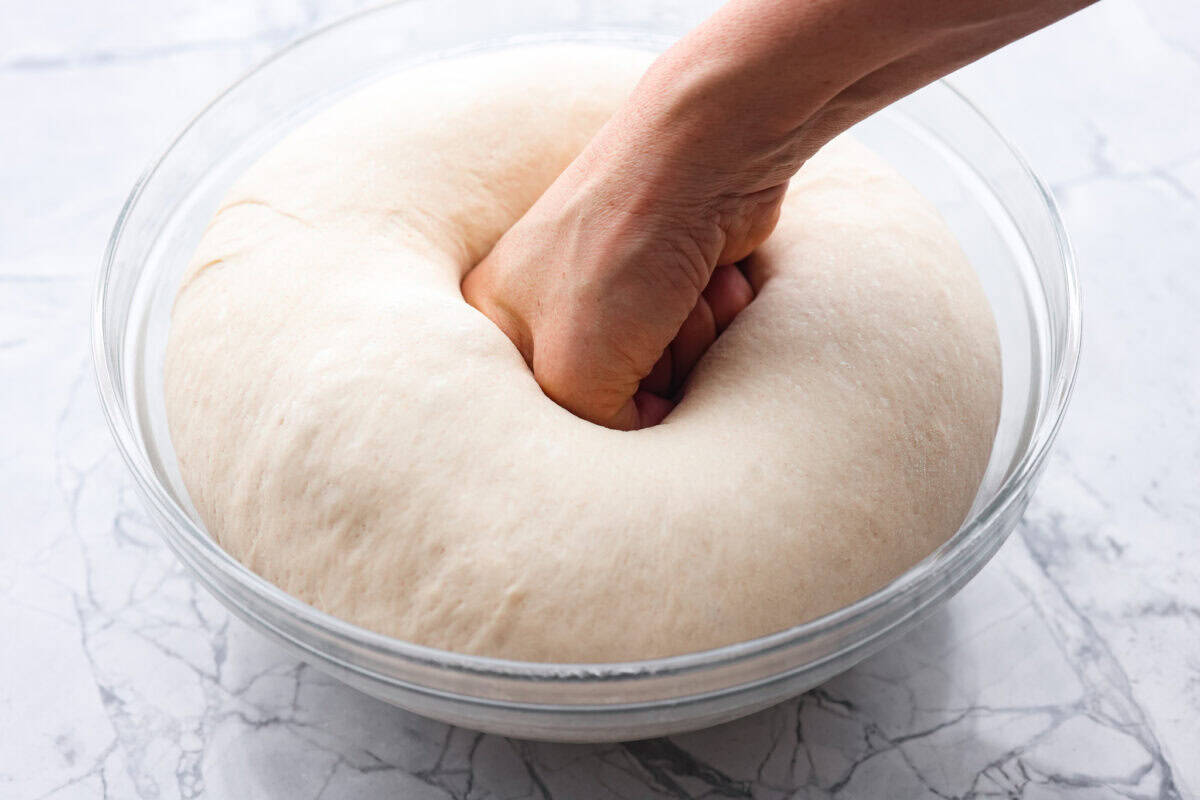
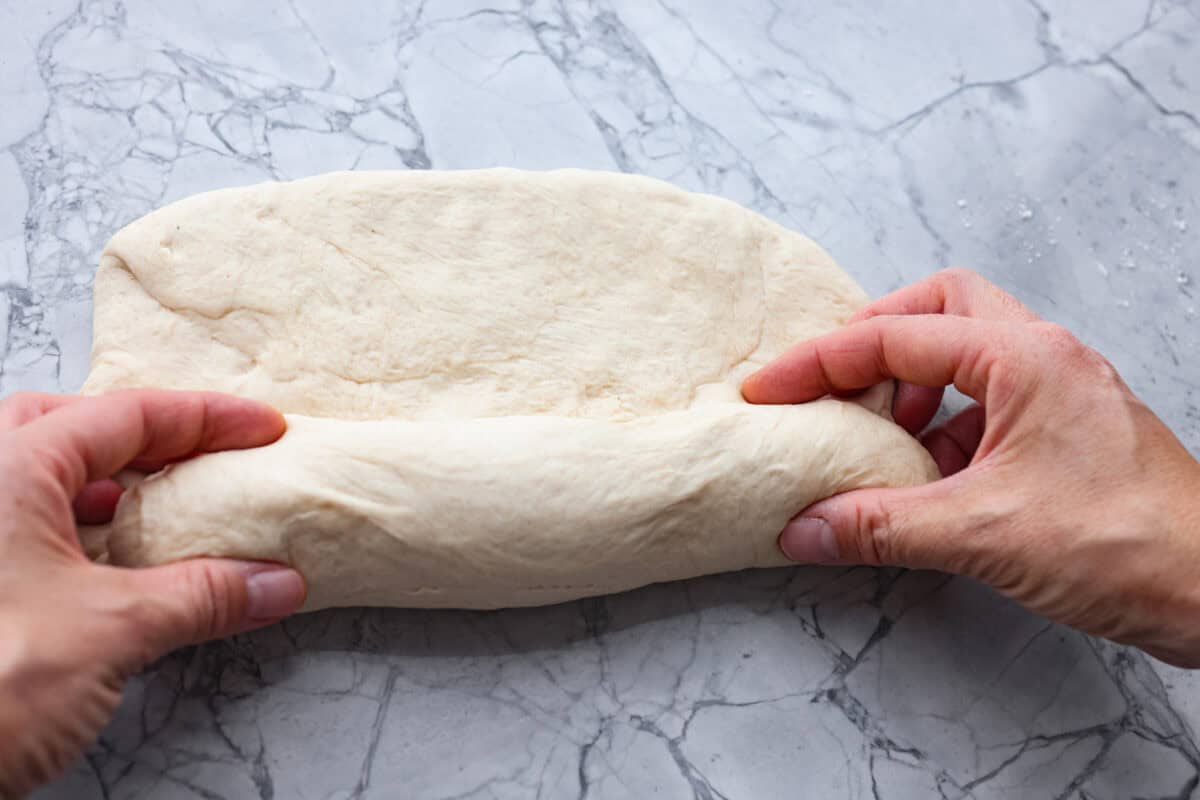
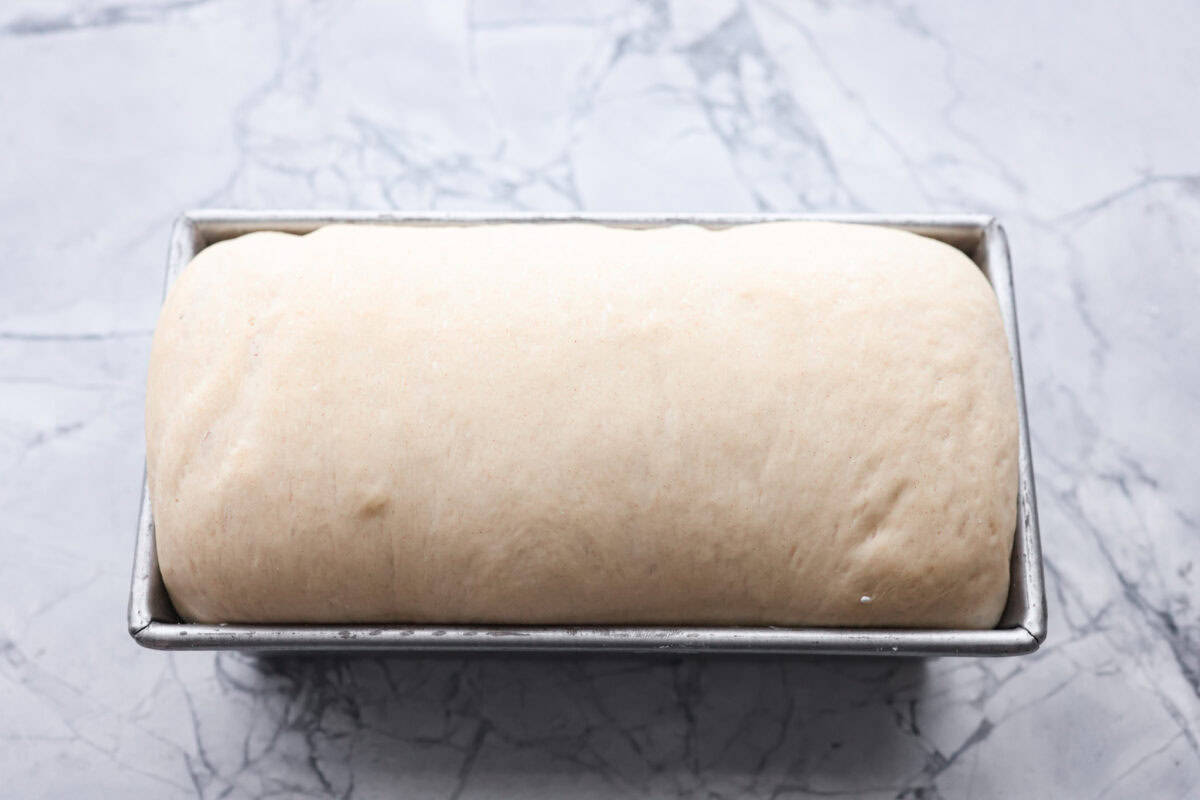
How to Knead Dough
I knew I wanted to include kneading instructions in this beginner’s guide to baking bread because knowing how to knead dough can be intimidating. There are two kinds of ways to knead your dough. The easiest way is in the stand mixer using the dough hook. The stand mixer does all the work. If you don’t have a stand mixer, kneading can be done by hand. Follow my instructions below to help you with the kneading process.
- In the Stand Mixer: Once the ingredients come together, it’s time to knead the dough. I prefer to incorporate all my ingredients using a kitchen aid. Always use the dough hook attachment. A whisk or paddle will beat the dough up too much and shred the gluten strands as they try to form. Increase the speed of the mixer and let it mix and knead the dough for a few minutes.
- Knead By Hand: Dump the dough onto a lightly floured surface and work the dough with your hands to knead it. You will use the heels of your palms to gently push the dough away from you. Pull and stretch the dough back over itself toward you then push it back and away again. Keep some flour nearby to lightly sprinkle or dust on the loaf and keep your hands floured so they don’t stick too much to the dough. You will work your dough a few minutes, typically about 4 minutes or more until it stays together in a ball and develops a smooth surface.
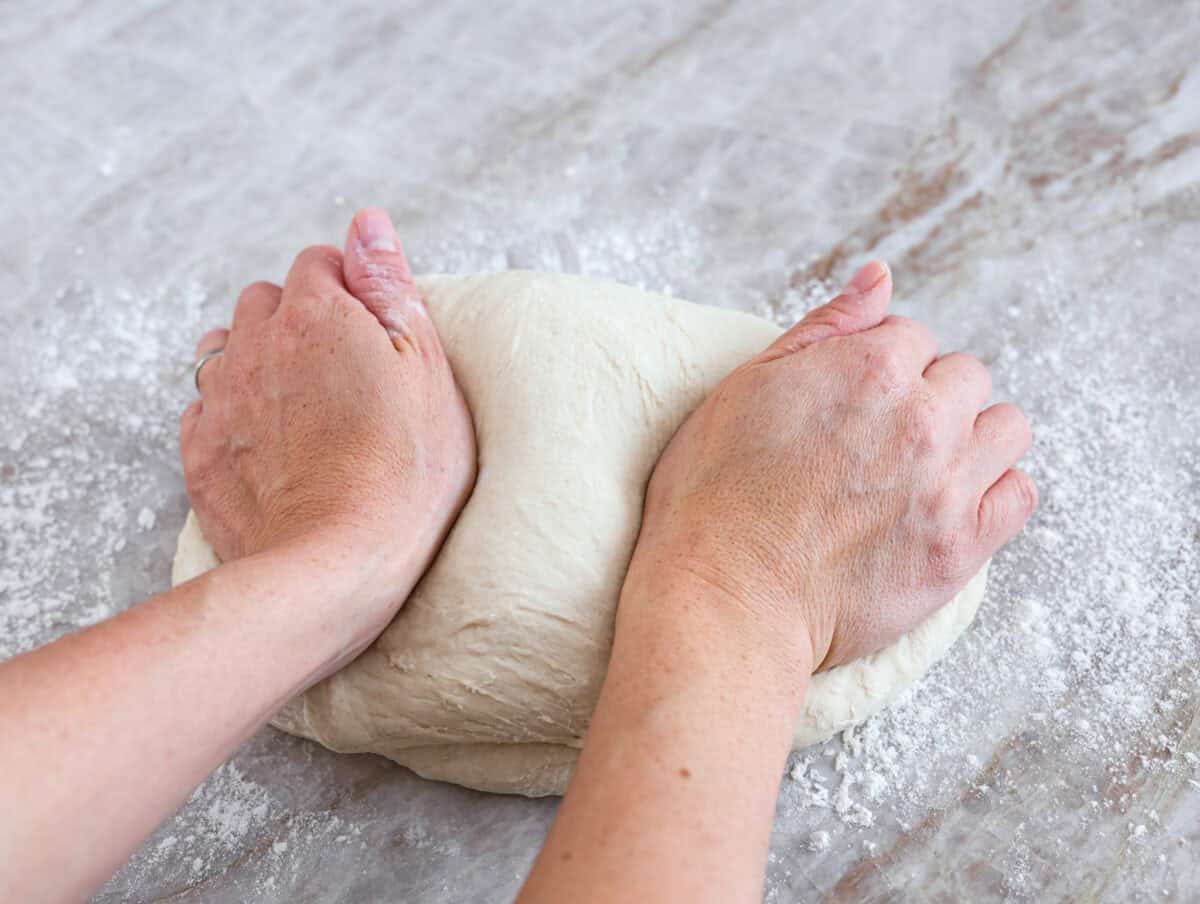
What is the Right Consistency of Bread Dough?
Let me help you find the right consistency for your bread dough! If you notice the dough is not pulling away from the sides of the bowl as the dough is mixing, then you will need to add in a little extra flour. Add a couple of tablespoons at a time until the dough pulls away from the bowl and cleans the bowl.
- Sticky Dough: The dough should not stick to your hands too much. It should be expected to be a bit sticky and you will need to flour your hands and work surface until you have developed the gluten in the dough.
- Poke Test: You will know when a loaf is ready by doing a poke test. Lightly poking the loaf with your finger should leave a very slight indentation, it may spring back slightly, but you should still see where you poked.
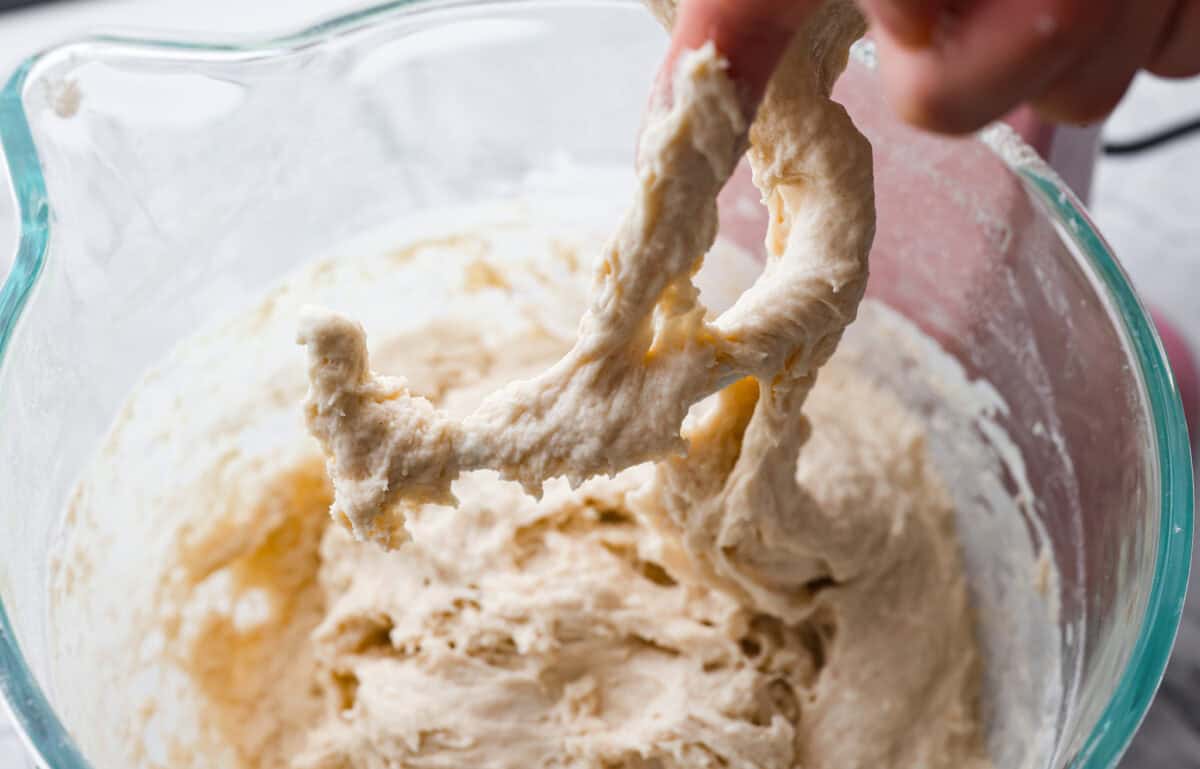
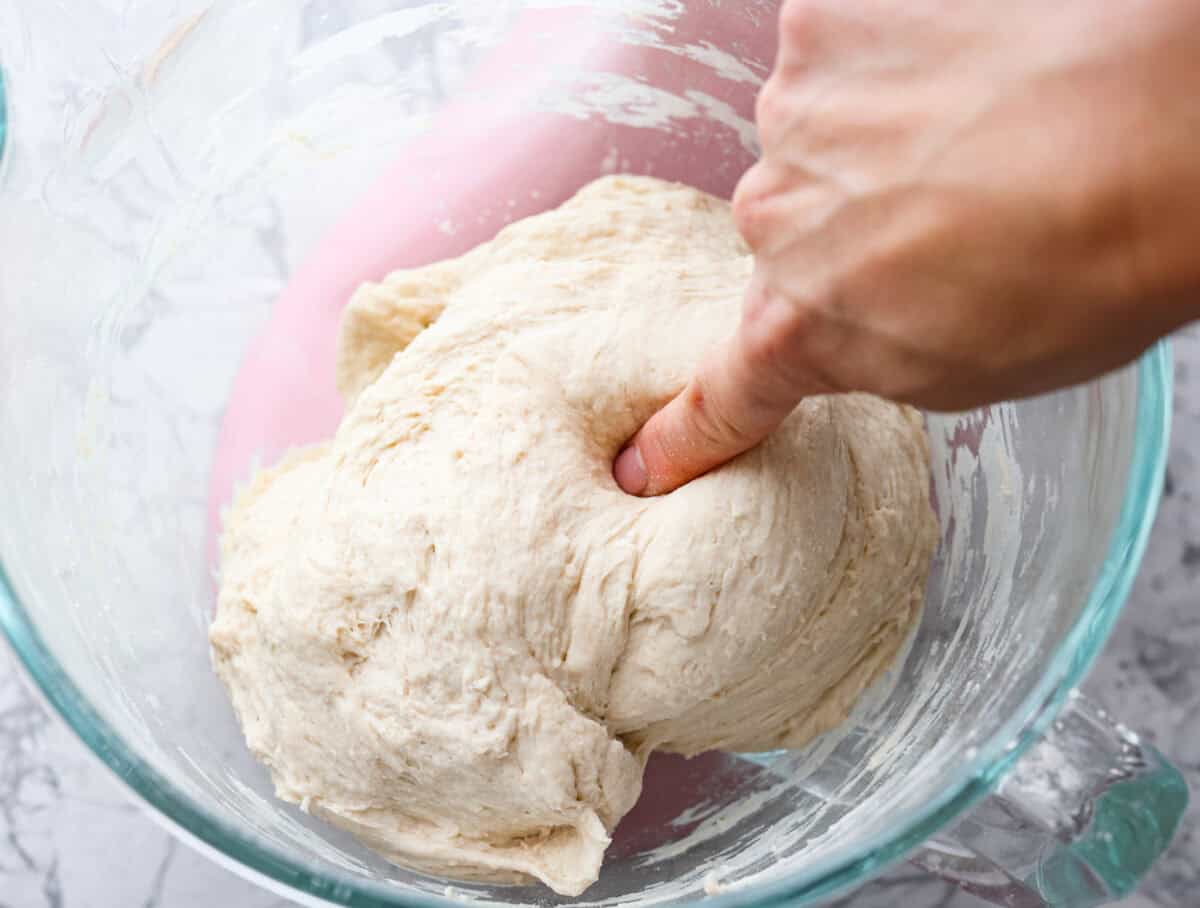
Weather Can Affect Bread Baking
Did you know that the weather can affect bread making? Especially on a hot or humid day! If your dough is too soft or too sticky, it most likely is the weather and you’ll need to adjust the flour amount. Add 1/4 cup of flour at a time until it reaches the right consistency. Also, yeast grows quickly in warm weather, so if it’s a hot day the dough will rise faster!
Tips For Baking Bread
Be patient with yourself when learning to make bread! A lot of things can affect the outcome of your bread and I hope this beginner’s guide to baking bread has helped! Below are some tips that you will find useful as you practice baking bread.
- Yeast: Good yeast should look creamy and foamy once it is proofed. Regardless of the type of yeast you use, if your water reaches temperatures of 120°F or more, the yeast will begin to die off.
- Under-Proofed VS. Over-proofed: Lightly poke the dough with your finger, if a deep indentation is left your loaf is likely over-proved, if the dough bounces back and is still tight it is under-proofed.
- Room Temperature: The warmer the room temperature is in your home, the quicker the bread will rise.
- Always Use the Dough Hook: When using a stand mixer, use the dough hook attachment. A whisk or paddle will beat the dough up too much and shred the gluten strands as they try to form.
- Clean Bowl: Dough should pull free from the mixer. Once the dough comes together and leaves the bowl looking clean, then your dough is ready!
- How to know if the bread is fully cooked: To know if your bread is fully baked, use a food thermometer. A fully baked loaf will be about 190 degrees Fahrenheit. The top of the bread should be a light golden brown color.
- Serrated Knife: A serrated bread knife is the BEST knife to perfectly slice your bread.
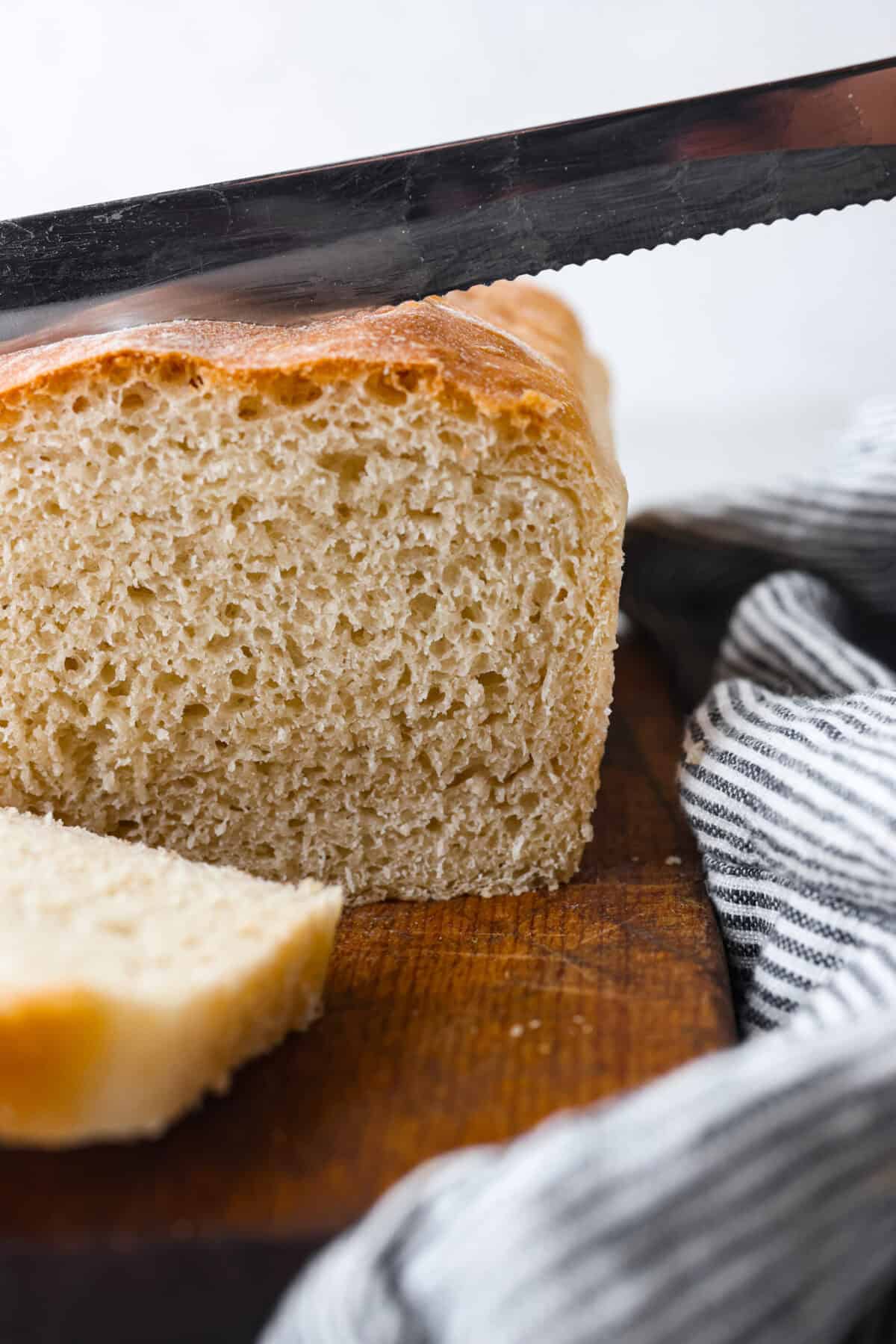
Storing Homemade Bread
Now that you successfully made bread with this beginner’s guide to baking bread, let’s store the leftovers! Here are my tips for storing bread on the counter, in the fridge, and in the freezer! Freeze an extra loaf or two for food storage.
- At Room Temperature: Place the loaf of bread or sliced bread in a ziplock bag or airtight container. Make sure to seal it tightly, so air doesn’t get into the bag and dry it out. Keeping the bread unsliced until you are ready to eat is best. The bread should last about 5-7 days.
- In the Refrigerator: Storing the bread in an airtight container in the fridge will last about 7-9 days.
- In the Freezer: Bread freezes well, so I always make an extra loaf or two! Store it in an airtight container in the freezer for 2-3 months. Let it thaw overnight in the fridge before serving.
More Bread Recipes to Try

